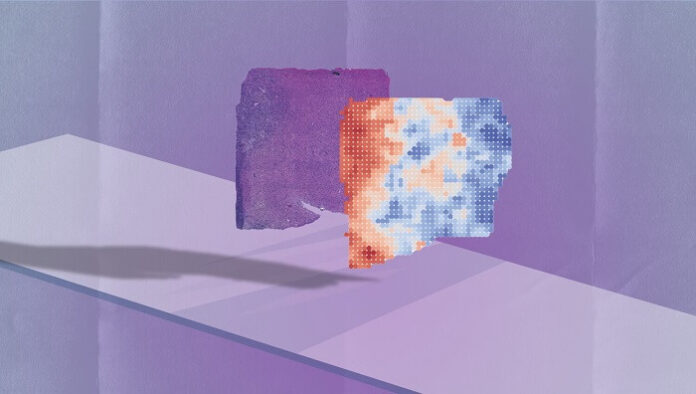

Researchers at Stanford Medicine have developed an artificial intelligence (AI) program capable of predicting the gene activity within tumor cells using only standard biopsy images. This breakthrough, published in Nature Communications on November 14, could significantly speed up cancer diagnosis, reduce costs, and help clinicians make better treatment decisions without relying on expensive and time-consuming genomic sequencing.
The AI tool, named SEQUOIA (Slide-based Expression Quantification Using Linearized Attention), was trained using data from over 7,000 tumor samples across 16 different cancer types. By analyzing routine biopsy images, the program can predict the expression of more than 15,000 genes that are crucial in cancer development and treatment responses.
Traditionally, understanding which genes drive a tumor’s growth requires expensive genetic sequencing, but SEQUOIA can generate similar insights based on basic hematoxylin and eosin (H&E) stained biopsy images. This could lead to faster, more affordable cancer care, enabling quicker identification of gene signatures that inform treatment choices, such as chemotherapies, immunotherapies, and hormone-based therapies.
“We could use this software to quickly identify gene activity in tumors, speeding up clinical decision-making and saving thousands of dollars in healthcare costs,” said Dr. Olivier Gevaert, senior author of the study and a professor of biomedical data science at Stanford.
In their research, the team demonstrated that SEQUOIA could accurately predict gene activity in breast cancer biopsies, including gene signatures linked to patient outcomes. The AI model showed over 80% correlation with real gene activity data for some cancer types, and it was particularly effective at predicting large genomic programs, such as inflammation or cell growth pathways, which influence cancer behaviour and treatment responses.
To test its clinical relevance, the team compared SEQUOIA’s predictions with the FDA-approved MammaPrint test, which assesses breast cancer risk using gene expression data. SEQUOIA was able to produce similar risk scores from biopsy images alone, successfully identifying high-risk patients with worse outcomes, including higher recurrence rates.
As reported by medicalxpress, while the AI model is not yet ready for clinical use and requires further testing and FDA approval, the results have shown significant promise. The team envisions that SEQUOIA could eventually replace expensive genetic tests, providing a new, cost-effective tool for cancer diagnosis and treatment planning.
This research represents a significant step forward in integrating AI into healthcare, offering a new way to analyze cancer at the genetic level without the need for costly and invasive procedures.






















